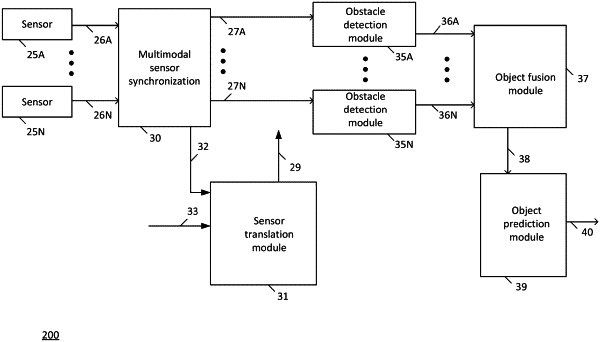| CPC G01S 7/4004 (2013.01) [G01S 7/497 (2013.01); G01S 13/58 (2013.01); G01S 13/865 (2013.01); G01S 13/931 (2013.01); G01S 17/58 (2013.01); G01S 17/86 (2020.01); G01S 2013/9318 (2020.01); G01S 2013/93185 (2020.01); G01S 2013/9323 (2020.01)] | 25 Claims |

|
19. A computing system, comprising:
interface circuitry to connect the computing system to one or more mechanical components, and connect the computing system to a heterogeneous sensor array to monitor a physical space surrounding an autonomous or semi-autonomous system, wherein the heterogeneous sensor array includes a plurality of sensors, wherein at least one sensor of the plurality of sensors is a different type of sensor than other sensors of the plurality of sensors; and
perception circuitry connected to the heterogeneous sensor array via the interface circuitry, wherein the perception circuitry is to:
feed sensor data generated by respective sensors of the plurality of sensors through corresponding perception pipelines to corresponding object detectors;
detect a disruption to first sensor data associated with a first sensor of the plurality of sensors;
in response to the detection of the disruption, use second sensor data associated with a second sensor of the plurality of sensors to compensate for the disruption to the first sensor data;
determine a trajectory based on perception data output by the corresponding object detectors, wherein the perception data is based on the compensation for the disrupted first sensor data; and
control the one or more mechanical components based on the determined trajectory.
|